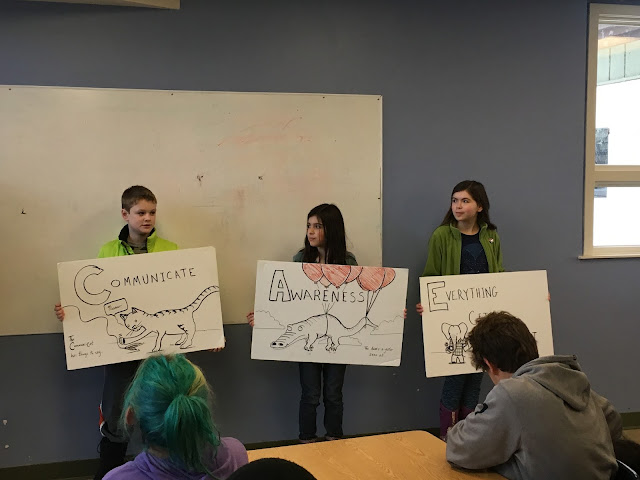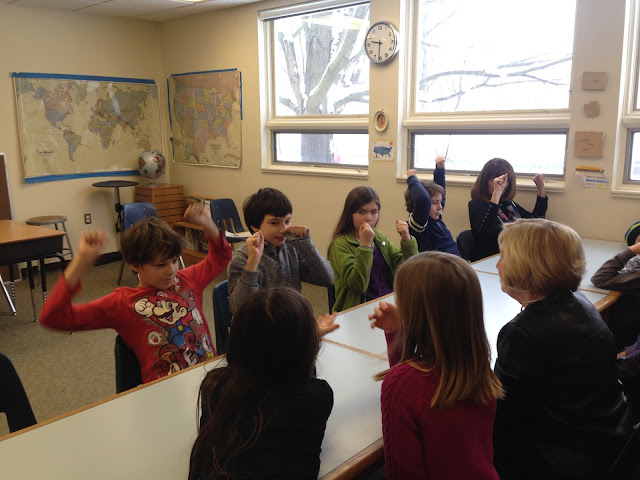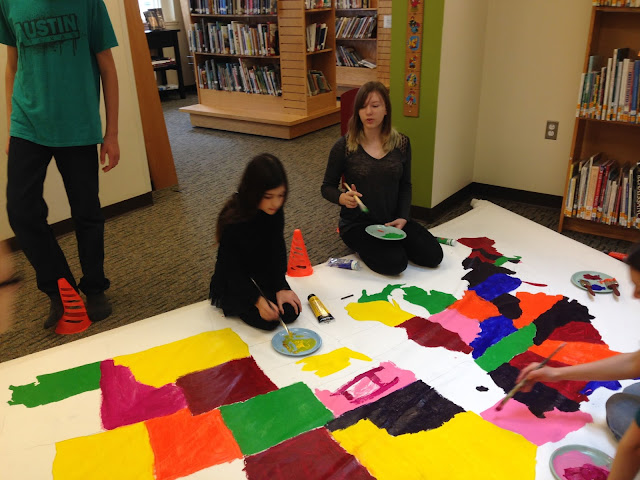
We're reaching a climax in Esperanza Rising, which has prompted some good conversations in class. Part of the plot involves the labor force organizing to protest low wages and living conditions at the farms and ranches in California. There are no easy choices for the characters: some band together to strike, others opt to keep working, for fear of loss of income. Some of the language of organized labor was familiar, but the concepts were a little shaky. We talked it through partly through the use of doodles, including the one below.
(Lest this appear too politicized, I'll mention that this specifically represents the workers and management in the book.)
In the story, some of the strikers take steps to slow down the people who have opted to keep working, hoping that slowing the harvesting and packaging will force the management to give in to demands before their product wilts and rots. One of their methods is to slip "surprises" into the crates of fruits and vegetables that are to be packed. Workers open crates to find rats, broken glass, razor blades, and snakes awaiting them. This understandably causes the workers to move extremely slowly. The tactic inspired some heated debate in our class when someone labeled it as a form of terrorism. Some students had been philosophically aligned with the striking workers, so to hear their actions characterized with such a loaded term was troubling to them. It was a spirited conversation about a difficult concept.
Much less controversially, Eva followed the directions in the back of the book to craft one of the yarn dolls that features into the book:
On an unrelated note, this is Lisa showing us an x-ray of school rabbit Kelsey. Ask your child about the white oval in the image. (Hint: It tied in nicely to our ongoing study of body systems.)
























































